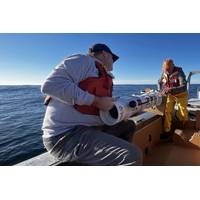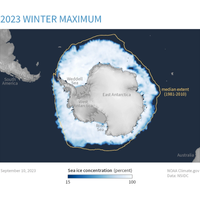
Scientists Discover Six Million Year Old Ice in Antarctica, Offers Unprecedented Window into a Warmer Earth
;s past climate, where abundant geological evidence indicates much warmer temperatures and higher sea levels compared to today.The research was led by Sarah Shackleton, assistant scientist in Geology & Geophysics, and John Higgins of Princeton University, who are affiliated with the National Science Foundation-funded Center for Oldest Ice Exploration, or COLDEX, a collaboration of 15 U.S. research institutions led by Oregon State University.“Ice cores are like time machines that let scientists take a look at what our planet was like in the past,” said Shackleton, who has participated

Sonardyne Technology Selected for New Oceanographic Research Vessels
Underwater positioning and tracking technology from Sonardyne has been chosen for three new oceanographic research vessels being built under the US' National Science Foundation (NSF) Regional Class Research Vessel (RCRV) construction program.Led by Oregon State University, the RCRVs are being built for the US' Academic Research Fleet (ARF), enabling a new era of coastal and regional marine science. To support the RCRV's scientific missions, across diverse marine environments, Oregon State University selected Sonardyne's Ranger 2 Gyro USBL 7000, engineered to meet both the demanding

Marine Heatwaves Impact Food Webs
affected those microscopic organisms to see if those impacts were connected to the amount of carbon being produced and exported to the deep ocean.”The research team used information collected by the Global Ocean Biogeochemical (GO-BGC) Array, a collaborative initiative funded by the US National Science Foundation and led by MBARI that uses robotic floats to monitor ocean health.The GO-BGC project has deployed hundreds of autonomous biogeochemical Argo (BGC-Argo) floats, which measure ocean conditions such as temperature, salinity, nitrate, oxygen, chlorophyll, and particulate organic carbon (POC)

Seismometers Retrieved for Slow-Slip Earthquake Study
Earth Observatory, and the University of Rhode Island are the research partners on this project. Scientific research funding for this project has come from New Zealand's Ministry for Business, Innovation and Employment, Germany’s Helmholtz Association, the United States National Science Foundation, and Japanese government science funding

Whale Fecal Samples Link Ocean Warming to Rising Algal Toxins in Arctic Waters
19 years. While domoic acid was less prevalent (in some years no DA was detected), this study shows for the first time that domoic acid exposures in Arctic waters are increasing due to warming and loss of sea ice.Scientists used data from a monitoring mooring in the Beaufort Sea, funded by the National Science foundation’s Arctic Observing Network, to compare toxins in the bowhead whales to environmental conditions. “It was fortuitous that we’ve maintained a long-term mooring near the whale feeding site, which provided the opportunity to investigate the role of the changing circulation

Satellite data from Ship Captures Landslide-Generated Tsunami
place at the right time to show this method also works for landslide-generated tsunamis.”On May 8, 2022, a landslide near the port city of Seward, Alaska, sent debris tumbling into Resurrection Bay, creating a series of small tsunami waves. The R/V Sikuliaq, a research ship owned by the National Science Foundation and operated by the University of Alaska Fairbanks, was moored 650 meters (0.4 miles) away. It was equipped with an external Global Navigation Satellite System (GNSS) receiver previously installed by Ethan Roth, the ship’s science operations manager and co-author of the study.Adam

Research Vessels: A Conversation with Bruce Applegate of UNOLS
the United States among other countries.Copyright 2025 Scripps Institution of Oceanography / UC San DiegoFunding and the Future of UNOLSOceanographic research holds significant value yet continues to struggle with ongoing funding difficulties. UNOLS depends mainly on financial backing from the National Science Foundation (NSF) and the Office of Naval Research (ONR) yet existing funding fails to satisfy expanding research needs. “If we doubled our budget tomorrow, we would still have enough scientific projects ready to use that additional capacity immediately,” Applegate emphasized.UNOLS

Wind Patterns Help Predict Low Antarctic Sea Ice
influencing ice sheets and global currents.As summer arrives in the Southern Hemisphere, the current sea ice extent remains sparse around Antarctica, close to a record low for this time of the year.The study was published in Nature Communications Earth & Environment and was funded by the National Science Foundation and the U.S. Department of Energy

Unlocking Ocean Power: $3.6M for Community-centric Wave Energy Converters
environmental trade-offs.Coastal communities are partnering with a multidisciplinary research team to determine the best way to harvest wave energy at Beaver Island, Michigan, and Nags Head, North Carolina.The project is led by the University of Michigan, supported with $3.6 million from the National Science Foundation. It brings together researchers from five different institutions to help provide renewable energy that addresses the needs and concerns of coastal and island communities and identifies paths to make wave energy technology competitive with solar and wind power.Waves are a vast source of

 December 2025
December 2025





